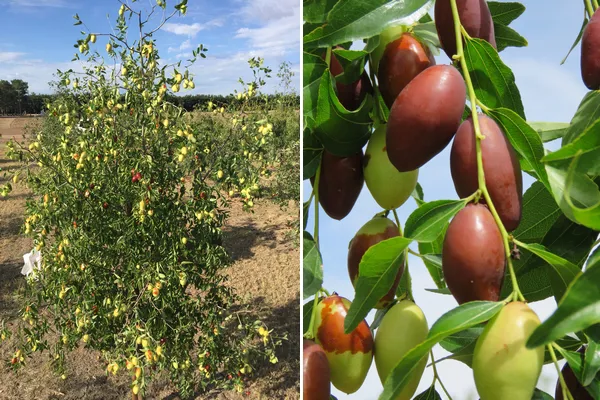Could Jujube fruit be an alternative fruit crop for New Mexico?
That’s an idea one university is developing following varietal trials of the red-brown colored fruit which are also known as Chinese dates.
Shengrui Yao, an extension fruit specialist with New Mexico State University’s College of Agricultural, Consumer and Environmental Sciences has trademarked the name AmeriZao for 34 varieties of the fruit.
“Jujubes have been around for about 4,000 years,” says Yao. “In China they have 800 or so varieties. Here we have probably 100 or so. They’re classified by how you use them—either they’re good for fresh eating or for drying and some for ornamentals. Some are multipurpose.”
The fruit, which grows between the size of a cherry and a plum depending on the cultivar, is a very sweet one and Yao hears it most commonly compared to a very sweet apple or sweet pear.
Why New Mexico?
So what’s the New Mexico connection? “Late frost here is a big problem. For apples, peaches and apricots, it’s probably the worst,” says Yao, noting that frost in New Mexico sometimes won’t end until mid-May. “So they needed something that could produce a more reliable crop and Jujubes bloom really late.”
In the semi-arid mountain climate, Jujubes, which are grown on small trees, start leafing out mid-to late April or even early May. (Compared to apples or stone fruit, which bloom in March or April leaving growers until May to wait and find out if they have a crop or not.) “They can avoid the frost and can produce a reliable crop every year,” says Yao. “They also bloom for a long time—1.5 to two months.”
She also adds that in the region, the large difference between daytime and night time temperatures helps increase the sugar accumulation in the fruit. Jujubes grow and produce high quality fruit not only in New Mexico but also the semi-arid Southwestern United States.
From here, Yao notes that to provide trees for commercial fruit growers, it needs to partner with nurseries to produce the quantity necessary for the market.
For more information:
Shengrui Yao
New Mexico State University
Tel: +1 (505) 852-4241
yaos@nmsu.edu
https://aces.nmsu.edu/jujube/
